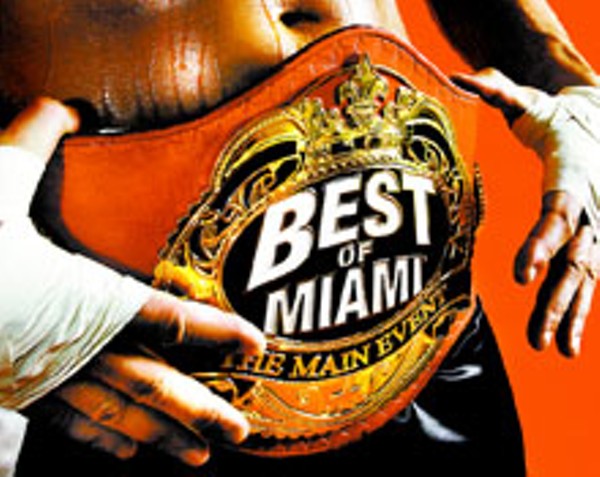Best Chinese Restaurant
Tropical Chinese
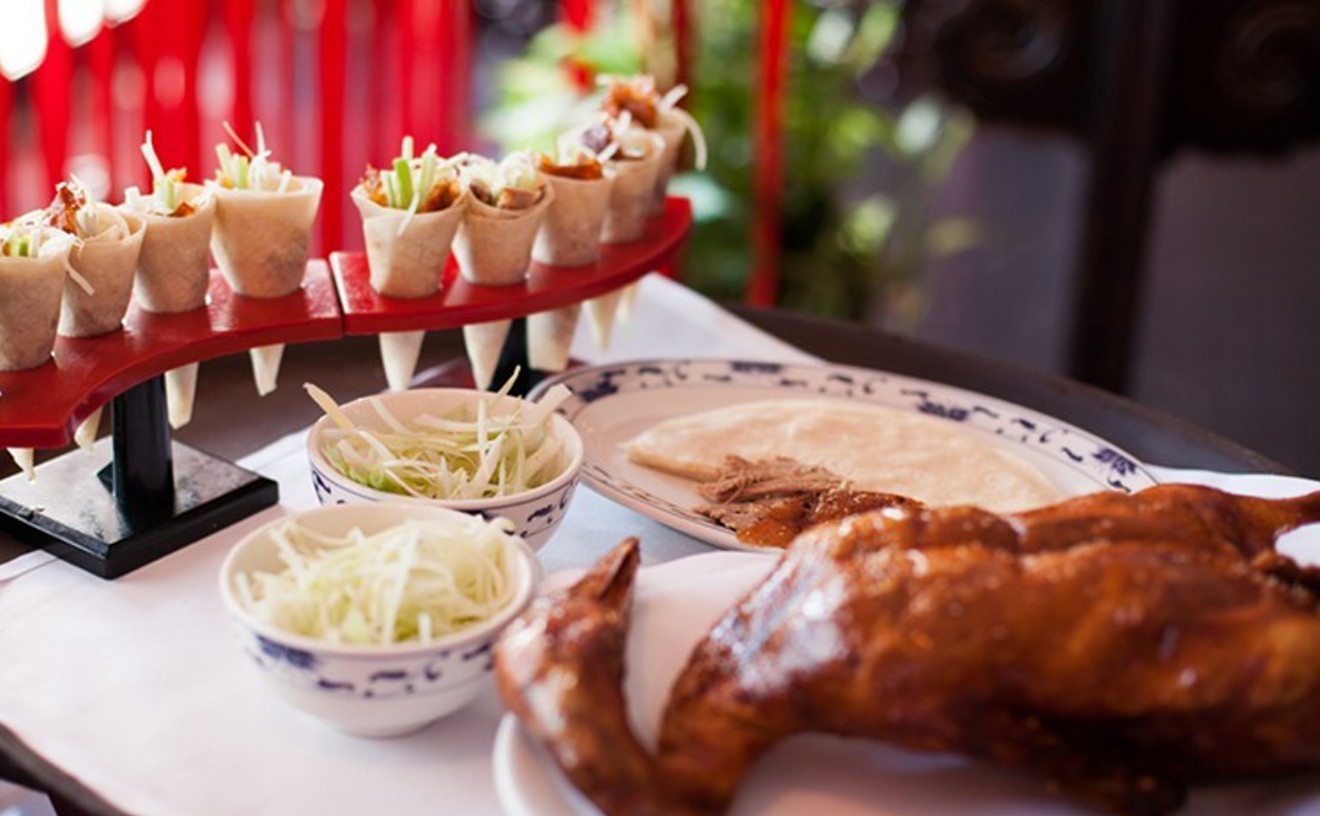
Photo by Andrew Meade
Yes, it is in a strip mall. Yes, the red lanterns and waiters' uniforms remind you a little bit of a James Bond movie, somehow. But the food ... the aroma of mushrooms wafting from a bubbling clay pot, of shrimp nestled deliciously in semitransparent dumpling wraps, of kung pao tofu with a hint of pork and mini chili peppers. Tropical is authentic Chinese and classic Miami. Go for dim sum on the weekends as well. The average cost of entrées is from $12 to $20.
- 7991 Bird Rd., Miami, 33155 Map
- 305-262-7576
- www.tropicalchinesemiami.com
Best Colombian Restaurant
Sanpocho
We like to visit this clean little two-year-old Colombian joint in a nondescript East Little Havana strip mall Sunday afternoons, when the mondongo and sancocho ($5.50 each with rice) are at their zenith. These soups are the basis of the weekend diet in Bogot‡ and beyond -- and here they are cooked to perfection, particularly the tripe in the mondongo. Indeed Colombianos from across Miami-Dade County, at least the patriotic ones, make their way here to enjoy the Aguila and Club Colombia Beer ($2.75 per bottle) while they nibble on bread and talk of home. Visitors with hearty appetites order the churrasco, a paragon of meaty perfection, which comes with a baked potato and salad for $8.95. The lucky ones get to chat with Amparo Valencia, the owner who hails from Armenia, which, in case you didn't know, is a city in the west-central mountains of Colombia.
Best Key Lime Pie
Blond Giraffe Key Lime Pie Factory
Sweetened, condensed milk was introduced to the Florida Keys 150 years ago. Owing to the lack of cows around, the new canned product was taken to with gusto by the citizenry, who developed all sorts of new recipes in which to use it. Key lime pie was far away the most successful of these concoctions, and the ingredients have hardly changed since its inception: key lime juice, condensed milk, and crust (originally made from pastry dough, but nowadays from graham crackers crumbled with butter). The only variation comes via the topping: whipped cream or meringue -- that is, except at the Blond Giraffe Key Lime Pie Factory. They base their pie on a flaky cornmeal crust, use Nellie & Joe's key lime juice in the delicate pale yellow custard, and top it off with -- nothing. That's the plain pie, which costs $3.95 per slice and $17.75 for the whole. A slice capped with a lofty cloud of meringue, or a frozen key lime wedge dipped in chocolate and served on a stick are also available at the same single-serving price (slightly more per pie). However you slice it, and however you top it, Blond Giraffe's key lime pie is the best thing anyone has created from a can of condensed milk.
Best Chocolate
Romanico's Chocolate

Four things you might not know about chocolate:
1. A single chocolate chip provides sufficient food energy for an adult to walk 150 feet; hence it would take about 35 chocolate chips to go one mile, and 875,000 for an around-the-world hike.
2. Chocolate has in excess of 500 flavor components, more than twice the amount found in strawberry and vanilla.
3. Chocolate syrup was used for blood in the famous 45-second shower scene in Alfred Hitchcock's Psycho.
4. Romanico's on Coral Way makes the most luxurious chocolate in Miami. Owner Alejandra Bigai's specialty is hand-rolled truffles, which come in delectable flavors such as holy berry, passion caramel, heavenly vanilla, and wild coconut; the last is a blend of mild and dark chocolate plumped with coconut cream and coated with tiny white flakes (six for $12, and only 38 calories each). The other main draw here are the box sets of hand-painted chocolates. Those found in the Piccolo Art Collection ($11.95) are filled with almonds, hazelnuts, pistachios, or dulce de leche; the 40 chocolates in the Grande Collection ($39) are etched with colorful fish. All chocolates come beautifully packaged and with personalized note cards, which makes them ideal gifts. Or sit in the cozy shop, sip a cappuccino, and slowly relish the sweets yourself.
1. A single chocolate chip provides sufficient food energy for an adult to walk 150 feet; hence it would take about 35 chocolate chips to go one mile, and 875,000 for an around-the-world hike.
2. Chocolate has in excess of 500 flavor components, more than twice the amount found in strawberry and vanilla.
3. Chocolate syrup was used for blood in the famous 45-second shower scene in Alfred Hitchcock's Psycho.
4. Romanico's on Coral Way makes the most luxurious chocolate in Miami. Owner Alejandra Bigai's specialty is hand-rolled truffles, which come in delectable flavors such as holy berry, passion caramel, heavenly vanilla, and wild coconut; the last is a blend of mild and dark chocolate plumped with coconut cream and coated with tiny white flakes (six for $12, and only 38 calories each). The other main draw here are the box sets of hand-painted chocolates. Those found in the Piccolo Art Collection ($11.95) are filled with almonds, hazelnuts, pistachios, or dulce de leche; the 40 chocolates in the Grande Collection ($39) are etched with colorful fish. All chocolates come beautifully packaged and with personalized note cards, which makes them ideal gifts. Or sit in the cozy shop, sip a cappuccino, and slowly relish the sweets yourself.
- 1801 Coral Way, Coral Gables, 33145 Map
- 305-854-9936
- www.romanicoschocolate.com
Best Cuban Restaurant
Canela Café

Admittedly this new neighborhood café's Cuban specialties are spotlighted only at lunchtime, when Cuban-American co-owner Margarita Vasallo is the kitchen dominatrix. Although the menu is limited to sandwiches, starters, and a few full-size entrées, all items are of high quality -- and are the real thing. Dishes include several typical Cuban beef cuts, a fish and soup of the day, and one or two more labor-intensive Cuban specials -- perhaps hefty rabo encendido or ropa vieja. Any deviations from tradition are imaginative improvements, such as pan con bistec ($5.95 to $6.95) served with a choice of three steaks (palomilla, breaded palomilla, or churrasco), topped with fashionable mixed-veggie Terra Stix instead of canned potato sticks, and accompanied by a mesclun, rather than iceberg lettuce, side salad. The $3.50 serving of sopa de pollo (richly flavorful broth packed with poultry, calabaza, corn on the cob, and much more) is to normal chicken soup as the University of Miami's bulked-up ibis is to Tweety Bird. And the impossibly creamy house croquetas ($1.50 each) are nothing short of a ticket to Heaven for the price of a bus ride.
- 5132 Biscayne Blvd., Miami, 33137 Map
- 305-758-9559
- www.thefederalmiami.com
Best French Restaurant
Palme d'Or
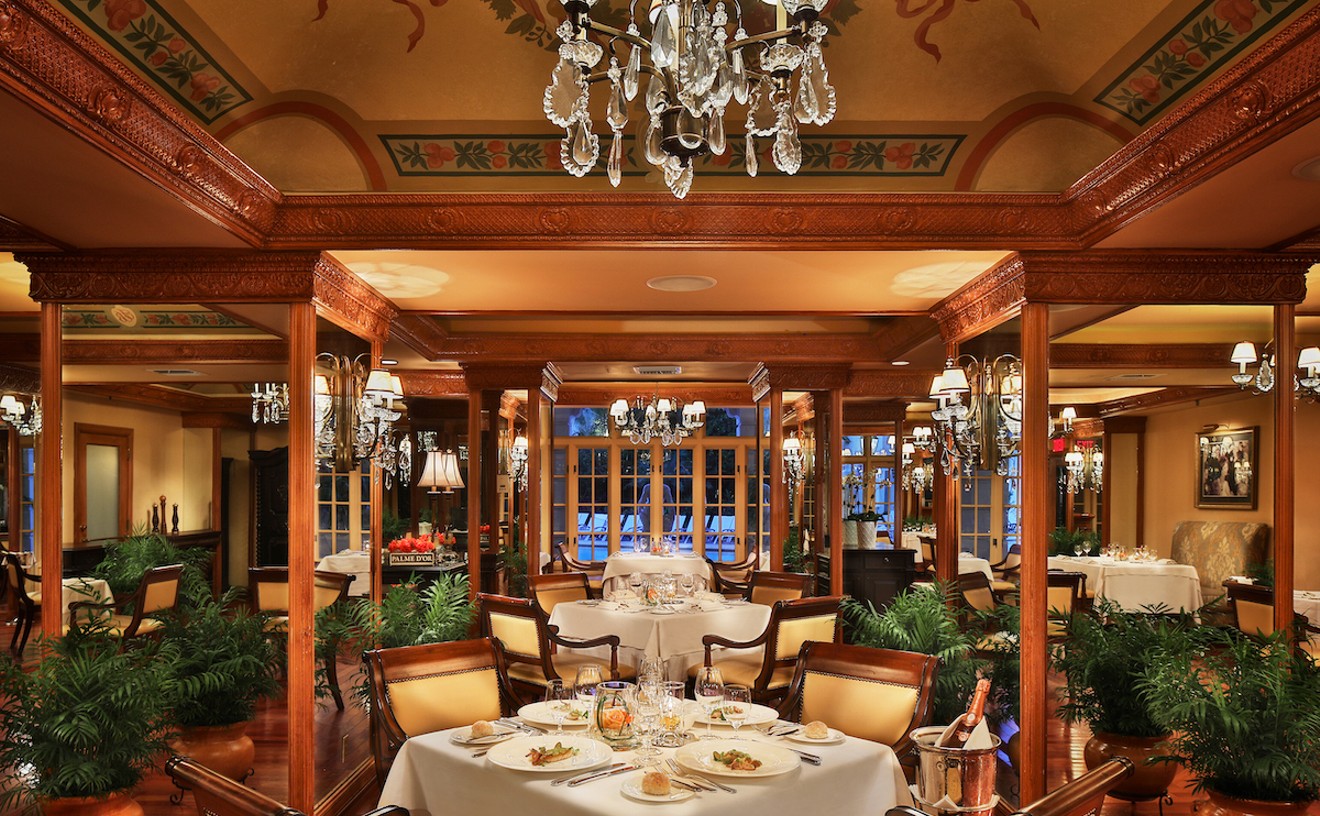
Photo courtesy of the Biltmore
A three-plate (generally appetizer-size) tasting dinner of roasted chestnut soup with seared foie gras and toasted walnuts; roasted Maine scallops with pumpkin crme, purple potato, and smoked bacon; and crisp plum tart with pink peppercorn ice cream: $39. The aforementioned courses with an extra tasting plate of Hudson Valley foie gras terrine with dried fruit chutney: $44. And another course of beef tenderloin with shallot butter, potato galette, and truffle sauce: $55. A six-course sampling dinner chosen by the chef, Philippe Ruiz, who is widely acknowledged as one of Miami's elite culinarians: $65. Plus wine pairing: $95. Getting to dine on the most exquisitely prepared French/Mediterranean cuisine in the city, in an elegant, intimate setting inside the posh Biltmore Hotel, with more than 300 wines from which to choose, and absolutely stellar service: Pricey. But not absurdly so. And worth every penny.
- 1200 Anastasia Ave., Coral Gables, 33134 Map
- 305-445-1926
- biltmorehotel.com/dining/palme_dor.php
Best Gourmet Grocery
Epicure Market
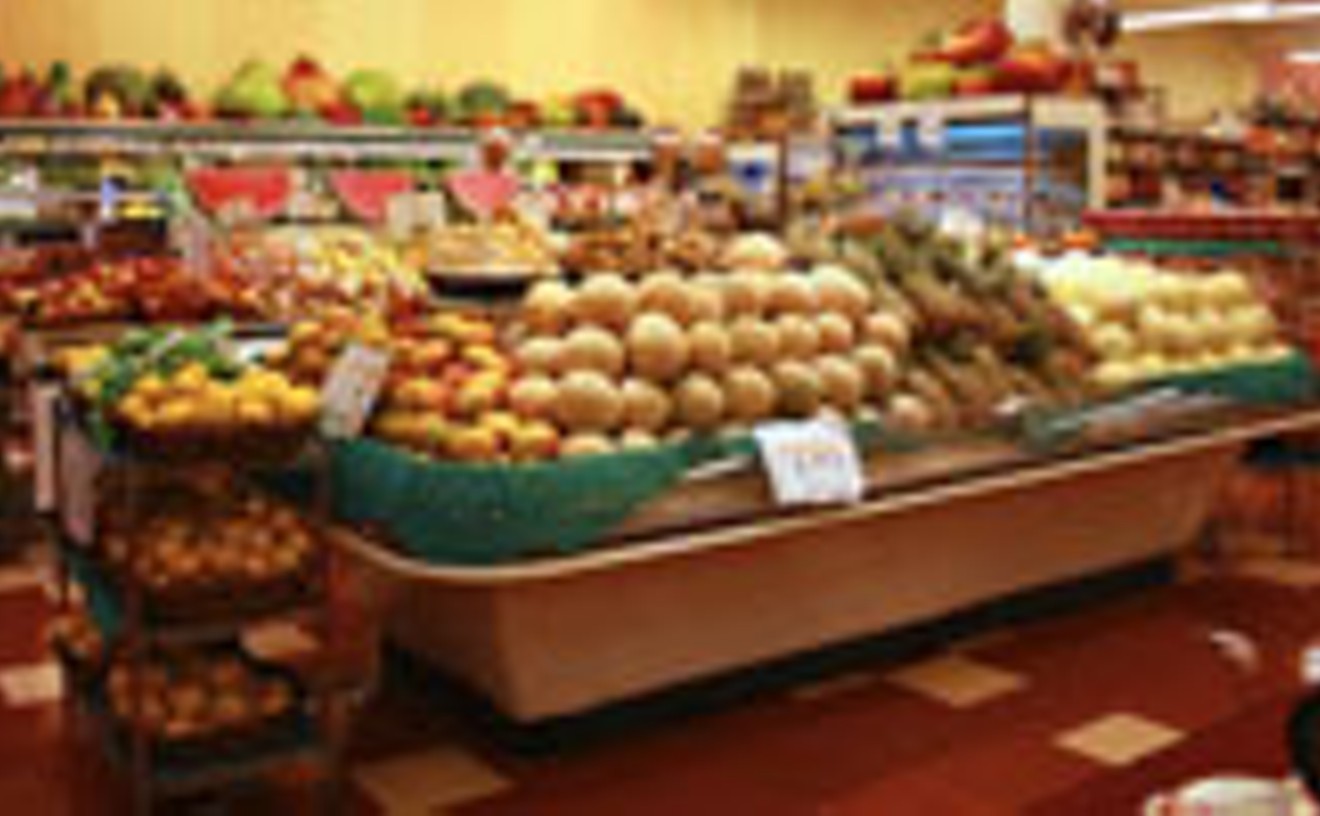
Alejandra Cicilia
The history of this South Beach gourmet food market is long and illustrious, but space does not permit us to go into detail. Nor can we describe the flawless cuts of fish, meats, and poultry displayed in their respective cases like Prada handbags. But trust us, the selection is huge and pristine. The stock of cheeses is also enormous, but imported from too many countries to name. Likewise there are too many breads and pastries baked fresh daily to enumerate, too many premade dinners assembled in the freezer to describe, and too many home-cooked foods sold behind the counter (like roast chickens, Cornish hens, meat loaves, barbecued ribs -- wait, we're not going to fall into this trap). There are so many prepared foods available in jars and easy-to-heat take-out containers it would not be fair to highlight the stuffed cabbage, chicken-in-the-pot, mushroom barley soup, or lasagna. You would need as many pages as there are in the phone book to inventory the myriad exotic fruits and vegetables in the produce section, topnotch vintages in the wine shop, and specialty comestibles on the market shelves. And everything is so damn delicious we cannot begin to tabulate the multitude of titillating tastes contained within these walls. Did we mention the olive station?
- 1656 Alton Rd., Miami Beach, 33139 Map
- 305-672-1861
- www.epicuremarket.com
Best Asian Grocery
Tim's Oriental Grocery
The problem with many Asian markets is that they specialize. If you want potsticker skins and chili paste with garlic, you go to the Chinese market. If you need ponzu and wasabi, you head to the Japanese grocery. If it's kim chee, the Korean; fish sauce the Vietnamese ... you know the drill. But Tim's offers one-stop shopping for otherwise hard-to-find ingredients from virtually every Asian country, which is what makes it such a treasure. Everything is arranged in well-organized rows according to place of origin. If that is not enough, Tim's also stocks an array of cookware, utensils, and tableware; all manner of fresh produce; a freezer section with banana leaves, Chinese lop cheung sausages, pastry wrappers and more; and in season, live blue crabs. And everything in the store is cheap -- really cheap. If you can't find what you're looking for here, you probably don't need it.
Best Greek Restaurant
Mykonos Greek Restaurant
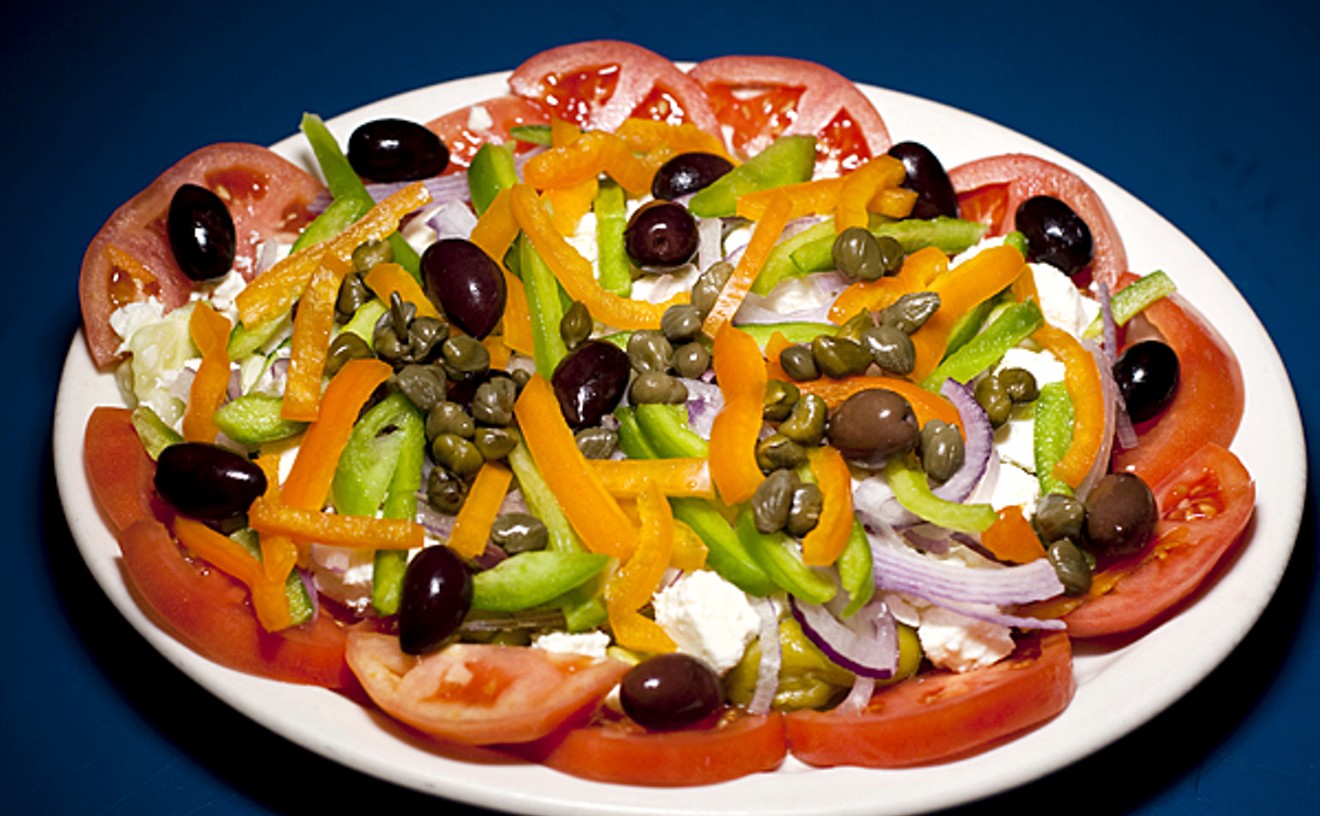
Natalia Molina
Owner Yiannis Kagouros claims to have "trained in the best school there is." The esteemed education facility to which he is referring, as you no doubt have guessed, is his Grandma Yia Yia's kitchen. Not surprisingly, a sense of family permeates the mom-and-pop style of the restaurant's Greek cuisine and ambiance. Appetizers include traditional spanakopita, hummus, and taramosalata, all fresh and sassily spiced ($4.50 to $6.50). But the octopus spiked with oregano vinaigrette; flambéed cheese saganaki; and Greek sausage tossed in caramelized onions and peppers ($7.95 to $8.95) are what really engage one's Aegean yearnings. House specialties are prepared with more aplomb than the competition's, especially the grilled lamb chops in the classic Greek marinade of olive oil, lemon juice, and oregano. Same simple and scrumptious treatment is afforded the grilled whole snapper, which is plucked from a pristine ice display. Some main courses, like a textbook ground-beef-and-macaroni pastitsio, are less than $10; most others are less than $20. Another reason we like this place: Desserts are not just afterthoughts. Don't believe us? Witness the galactobourico, a creamy custard rolled in phyllo, dipped in honey, and served mellifluously warm. Mykonos's charm lies in its softly muraled walls, amiable staff, and consistently solid renditions of characteristic Greek cuisine, not on crashing plates, confetti showers, and tabletop dancing -- though live entertainment and a high-spirited clientele ensures that dining here is not dull, either. Wines and beers from Greece no doubt aid in fueling that ebullience. It seems the only thing Mykonos is lacking is Grandma Yia Yia.
- 1201 Coral Way, Coral Gables, 33145 Map
- 305-856-3140
- www.mykonosmiami.com
Best Haitian Restaurant
Chez Madame John's
There is a good reason steady streams of Creole-speakers come into this nondescript joint. Six to eight dollars buys a massive serving of stewed meat or fried chicken or fish, served with rice, beans, and a boiled plantain on the side. A sixteen-ounce champagne soda costs an extra dollar. Tasty sauces with the perfect spicy/sweet balance complement the unusually tender goat. There is not much atmosphere except for the friendly banter of customers and staff, but the efficient service and authentic food make it a great alternative to touristy sit-down places and bare-bones take-out joints. Although most customers take their meals to-go, the sun-filled eating area of little Formica tables is pleasant enough. One customer, who says he's been going to Chez Madame John's since it opened in 1999, reveals the place is kind of a secret among the Haitian community. "You're the only white guy I've ever seen in here," he says to a New Times reporter. Prices range from $4 for a breakfast item to $16 for a special lamb dish. Most meals are between $6 and $8.


